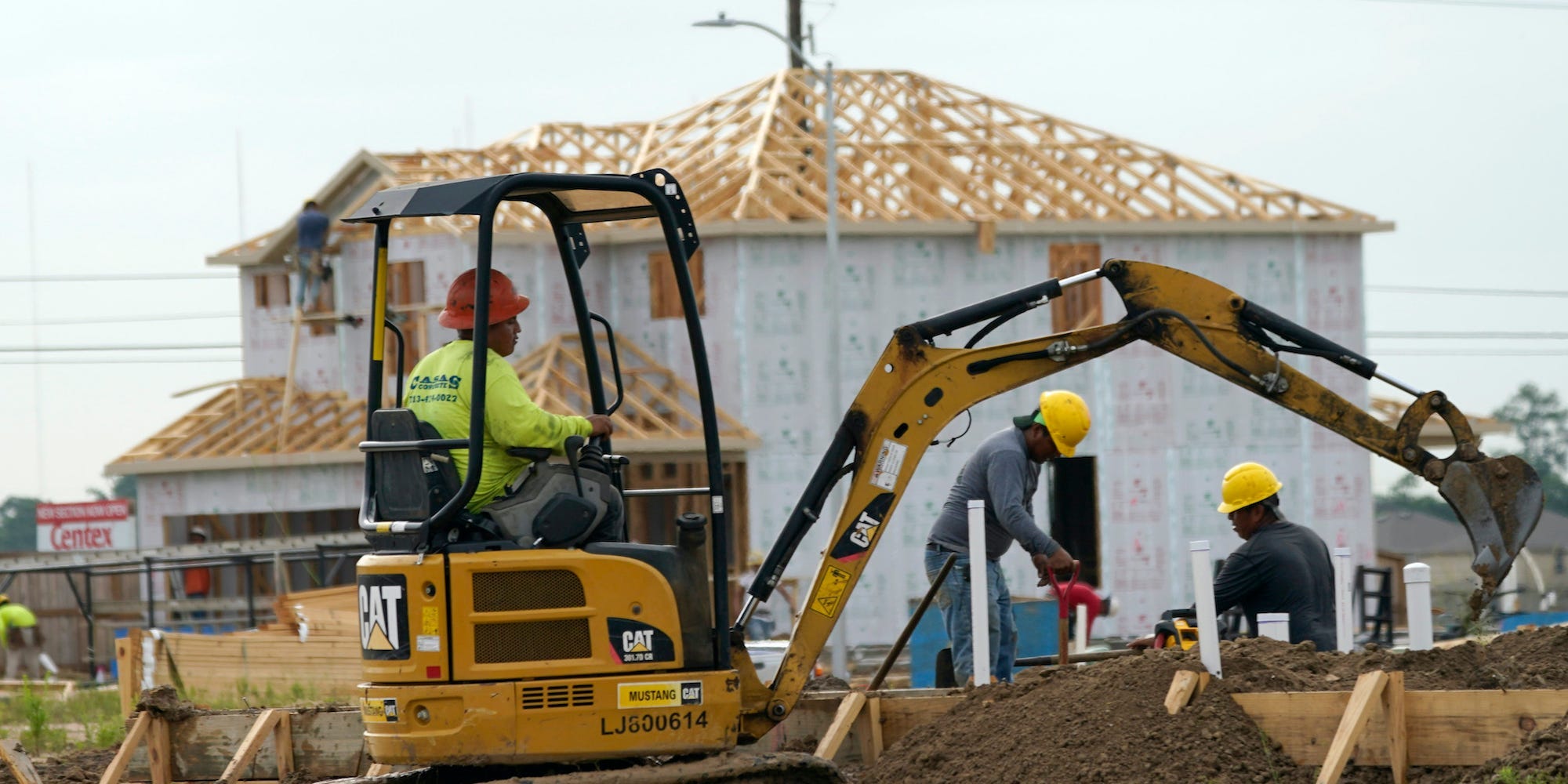
David J. Phillip/AP
- The housing market's hot streak will soon evolve to slower and more sustainable growth, Jefferies said.
- A historic supply shortage and massive demand sent prices soaring through 2020.
- Trends including a construction comeback and generational aging can fuel a steadier expansion, the firm said.
- See more stories on Insider's business page.
The homebuying sprint seen throughout the pandemic will soon give way to a long and healthy jog, Jefferies analysts said Thursday.
The dramatic housing market boom of 2020 simply can't last. The surge in home sales has left mere months of supply left, and contractors are struggling to keep up. Prices leaped at the fastest rate since 2006 in February, and while the pace of sales has slowed, it remains at historically elevated levels.
Meanwhile, the median house price has kept setting new records, putting affordability more and more out of reach. For much of the boom, mortgage rates were falling to new lows south of 3%, but that trend has reversed in 2021, presenting another affordability challenge for prospective buyers. Jefferies expects those dynamics to rein in the rally and set the stage for sustainable and inclusive market growth.
"The pandemic has been the catalyst for many buyers that were on the sidelines, pushing homeowners and renters to reevaluate their living quarters and driving the surge in demand," the team led by Philip Ng said, adding that new volatility stands to derail the market's momentum.
Here are the four trends contributing to a shakeup in the housing market's growth, according to Jefferies.
(1) Construction will catch up
Perhaps the biggest constraint on the housing market is its meager supply, but the supply-demand gap should spur a correction. The construction industry underbuilt for more than a decade after the housing market sparked the global financial crisis. The weak building activity led to a shortage of 2.5 million homes, but activity seen over the last year stands to change that, the team said.
"The pandemic has been a catalyst for many buyers that were on the sidelines, pushing homeowners and renters to reevaluate their living quarters and driving the surge in demand," the analysts said.
The shortage now serves as "an opportunity for homebuilders to pick up incremental demand," they added. Jefferies estimates another 1.8 million homes would need to be built to balance out the market.
(2) Millennials reaching peak buying age
Contractors will also ramp up building to match nascent demand from millennials, the firm said. Homeownership rates begin to rise with 25- to 29-year-olds and accelerate further for 30- to 34-year-olds as people get married and start families.
The population of 25- to 34-year-olds is currently 9% larger than the 35- to 44-year-old group, signaling to homebuilders that a wave of demand is on the horizon. The bank's modeling suggests monthly housing starts will land between 1.7 million and 2 million through 2024, markedly higher than the February reading of 1.4 million.
(3) Home inflation set to cool
Expectations for stronger inflation contributed to soaring lumber prices over the past year. Costlier building materials were estimated to be adding $24,000 to the cost of every new home, further boosting prices amid the supply shortage.
That pressure will soon be alleviated as the economy reopens and commodity-price inflation moderates, the team said. Futures contracts suggest lumber prices will sink 26% through 2022, just as construction picks up to match robust demand, they added.
(4) Interest rates have room to run
Mortgage rates have only recently started swinging higher after tumbling to record lows through 2020. The reversal stands to cool the market's buying spree as borrowing costs rise, but it won't halt purchases in their tracks, according to Jefferies.
For one, mortgage rates still sit at relatively low levels. The average 30-year fixed mortgage rate stood at 3.13% this week. Rates haven't had a cooling effect on housing-market growth since 2018 when they reached 5%. A pickup in supply could perfectly coincide with higher, but not stifling, mortgage rates, the analysts said,
"With supply improving from new construction and more homes likely being listed to capitalize on elevated home prices and vaccine availability, we see home price appreciation moderating," they added.
